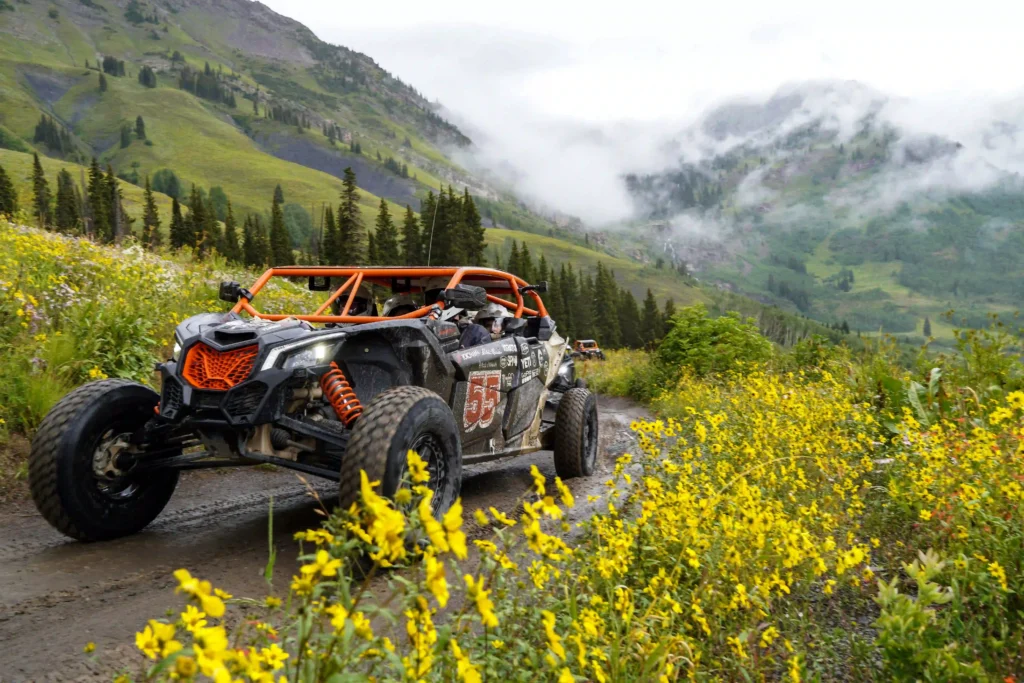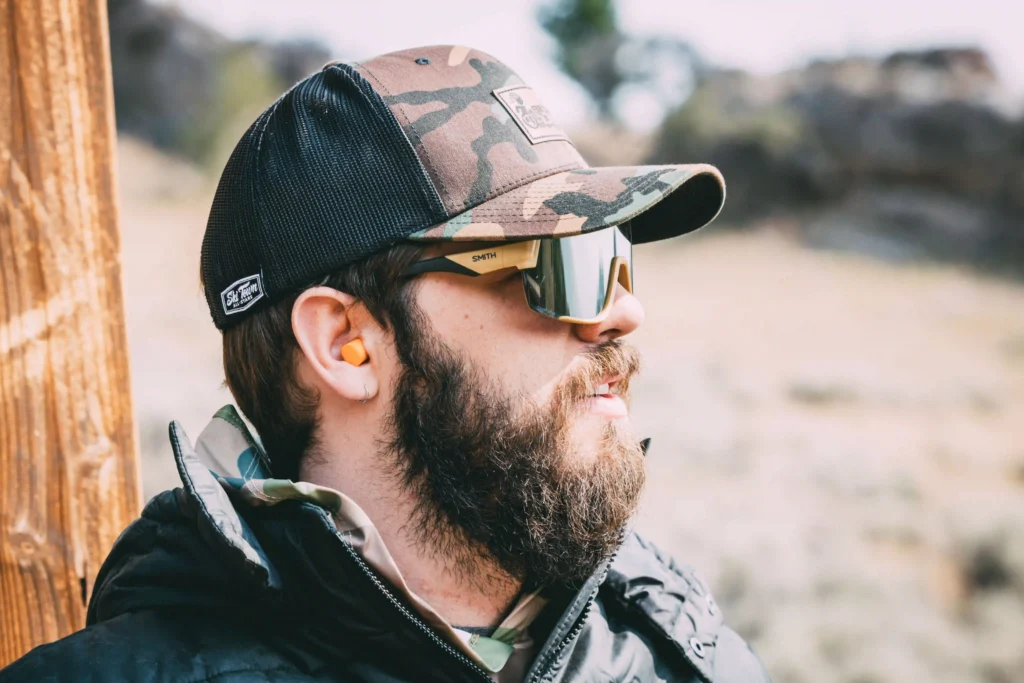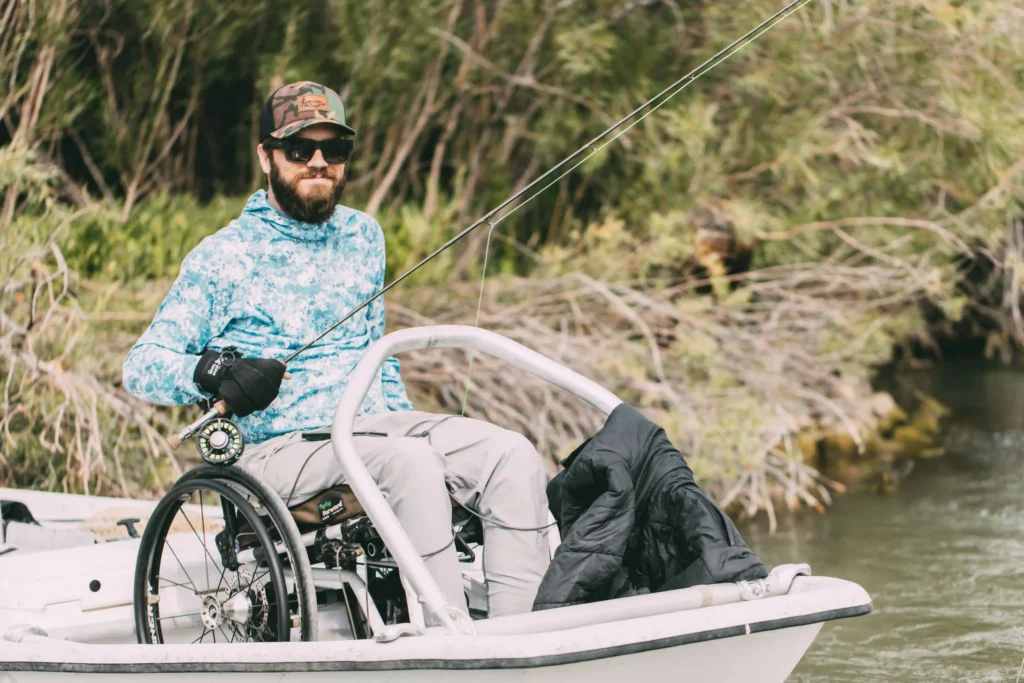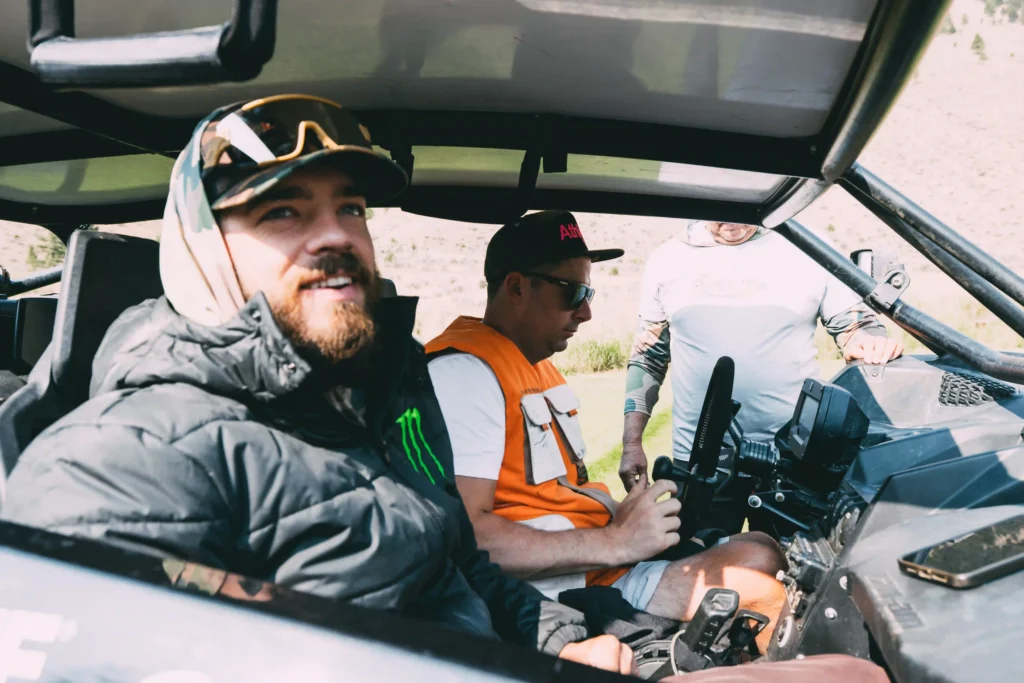
Listen to this Article

Tim Burr is not your ordinary adventurer. It’s easy to conjure up images of a rugged, thrill-seeking skier when you think of a guy raised in the mountains of Colorado, who has always lived life at full speed, diving into sports that are not for the faint of heart. He’s spent his life weaving through white-water rapids, flying down mountain slopes, and conquering the dirt trails on bikes and skis. But the story takes a sharp turn—a life-altering one—at 19.
Breaking his neck in 2014 while backcountry skiing in Colorado didn’t slow Tim down, though the world might’ve expected him to stop in his tracks. When you picture someone with a C5 spinal cord injury, you might imagine limitations, boundaries. But Tim saw a different landscape. He saw potential, not for sympathy, but for adventure.
Adaptive sports swooped in like a lifeline, but not a soft, comforting one. It was a challenge, and Tim grabbed it with both hands. High Fives Foundation, an adaptive sports organization, introduced Tim to a whole new world: adaptive surfing, mountain biking, skiing and even fly fishing. These sports became more than a hobby—they were his heartbeat! Life had changed, but the mountains? They were still there, waiting.
Here’s the thing about adaptive sports: it’s not just about getting back to life pre-injury. It’s about transforming, transcending the limits the world expects of you. You don’t just slap a band-aid on life after a spinal cord injury. You rebuild, you reimagine. Tim found his answer in something unexpected: dirt. And not just any dirt—Return to Dirt, a nonprofit that feels as wild and gritty as its name suggests. This was a new kind of freedom. Imagine getting behind the wheel of a UTV, racing through untamed terrain at 10,000 feet, with hand controls designed to defy the physical challenges of a quadriplegic body.

For Tim, driving was a new form of expression, not merely for transportation, but a way to reclaim the wilderness. He describes the Return to Dirt program as having “the lowest barrier to entry” for adaptive athletes with physical limitations, a way to level the playing field and make the outdoors accessible again. What Tim does with Return to Dirt is much more than enabling adaptive athletes to ride vehicles through the backcountry. It’s about giving people back their freedom and independence. That heady rush of adrenaline when the wheels kick up dust and the mountain air fly past is not just for him. It’s for anyone with mobility challenges. Whether they’re the ones behind the wheel or simply along for the ride, the experience of roaring through the wilderness, far from paved roads and concrete constraints, is unparalleled. For some, this is therapy, but it’s also adventure in its rawest form.
And that’s the magic of Tim’s approach—Return to Dirt isn’t framed as an adaptive sport program, as a way to ease pain or cope. It’s not about “helping the disabled.” It’s about being in the wild, just like anyone else who craves a ride through rugged terrain. Tim makes it clear: this is cool, this is badass, and anyone watching these adaptive athletes tear through the mountains will be in awe, disability or not.

Tim’s vision is about pushing boundaries but it is also about erasing them entirely. He doesn’t just want adaptive sports to exist as a niche—he wants to make them cool. Imagine a world where people don’t see limitations first but rather the sheer thrill of what’s possible. When an adaptive athlete takes the wheel, he doesn’t want them to be seen as someone overcoming their disability—they’re just another badass tearing up the trail. And for Tim, that shift in perspective is the ultimate goal.
When reclaiming freedom, especially after you’ve faced life-changing challenges, travel can be both an exhilarating adventure and a calculated necessity. With his passion for the outdoors, Tim’s travels have taken him to the rugged backcountry of Colorado, Utah, Nevada and beyond on exhilarating adventures. Like every traveller, the process includes booking a flight and packing bags but his is a meticulous orchestration of accessible lodging, adaptive equipment and support. The most crucial element? A hot shower. Simple, right? Yet, it’s the linchpin of his comfort and well-being. Ground transport is another essential consideration, ensuring that every trip is planned to the smallest detail.
Tim’s love for places like Montana and California helps him to enjoy freedom in places that offer adaptive accessibility. He refuses to be limited by his wheelchair, even when air travel can be an unpredictable challenge. Sure, there have been a broken wheelchair and occasional frustrations with accommodations, but Tim packs his patience and with his team of supporters—his adaptive entourage—his trips are all well worth it.
His life, post-injury, though full of grit and determination, is far from a solo endeavor. The community he’s built with High Fives Foundation and Return to Dirt is undeniable proof of what happens when people come together to smash preconceived notions of what’s possible. When High Fives merged with Return to Dirt in 2022, it was a declaration that adaptive sports were about thriving—not merely getting by. It was about pushing the limits of adventure and refusing to accept boundaries. High Fives Foundation, with its five pillars—snow, surf, biking, dirt and fishing—has become a giant in the adaptive sports world and Tim’s Return to Dirt is a cornerstone of that. Together, they sponsor athletes, host camps and get people out in the wild who never thought it possible again.
If there’s anything Tim has proven, it’s that your past doesn’t define your future. The world didn’t expect him to return to the dirt in the way that he has, but he’s not just returning—he’s owning it.
And the legacy Tim is building? It’s about showing up and being extraordinary— not about sympathy or overcoming. It’s about making adaptive sports not just necessary or functional but cool. As Tim says, it’s not about making nature accessible—that’s impossible. But you can make yourself more capable with the right tools, the right equipment and a whole lot of drive.
Tim’s vision for Return to Dirt is audacious. He’s pushing the notion that adaptive athletes aren’t sidelined—they’re out there in the thick of it, doing things most people can’t even dream of. Whether it’s driving through backcountry trails or navigating the complex world of adaptive sports, Tim Burr is not sitting back and riding the path that life gave him. He’s carving his own. And it’s badass. It’s wild. It’s dirt in your face, adrenaline in your veins and freedom roaring in your ears.
If you take one thing from Tim’s story, let it be this: nothing, not even a spinal cord injury, can keep you from the thrill of adventure. You just need to find your way back to the dirt.
Website: Return to Dirt | Facebook: Return to Dirt | Instagram: @returntodirt
